Business storytelling in the digital world is like programming code: The cleaner it is the better the user experience
Highly-technical business executives like digital program managers, content marketers, SEO strategists and software developers and programmers dismiss the power of person-to-person communication as a “soft skill.”
They argue that their technical “hard skills” outperform relationship-building skills in the digital workplace because the production output of hard skills is more measurable. And, technically, it is.
But what happens when you don’t have a clear vision of the digital project mission you’re on due to obfuscated communications? What occurs when your production group has little understanding of, or appreciation for, the contributions of its fellow team members toward a collective goal? What results when you have little empathy for your end user?
For all digital professionals, it requires the personal engagement software found in well-formulated communications to efficiently program and direct the hardware of your working group for success. Without connecting on a human level through true stories well told, your program suffers.
Even crashes.
For example, watch Bill Gates struggle to explain the logic of how Microsoft software found its way into the Apple II computer. Steve Job rescues Bill with a simple story.
I think Jobs demonstrated storytelling as an amelioration pattern to go from bad communications to good while Gates was stuck in an anti-pattern.
Another example from the world of these two competing tech titans of how story is the API of our cerebral operating system is found in their respective approaches to presentations. Which of these two images reflects cleaner code to effectively integrate their solution with the thinking of an audience?
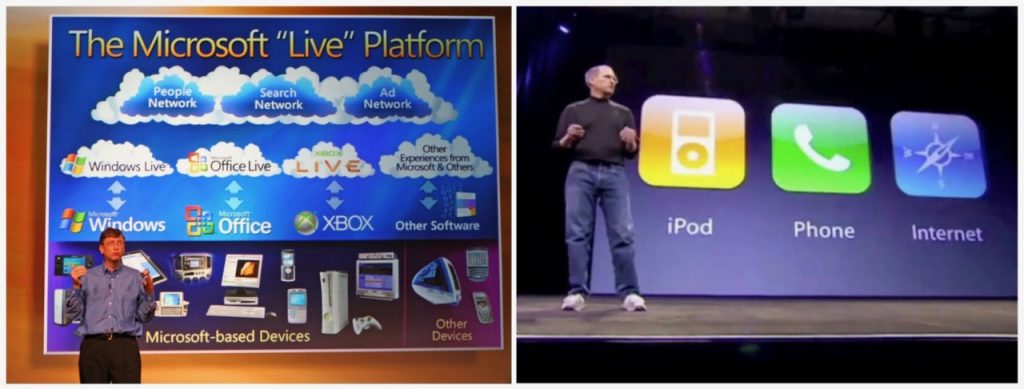
Bill Gates introducing the Microsoft Live Platform and Steve Jobs introducing the iPhone at MacWorld 2007
These two examples underscore to me that our minds are not logic processors, but story processors.
American social psychologist Jonathan Haidt explored this notion in his book, The Righteous Mind: Why Good People are Divided by Religion and Politics. “Everyone loves a good story; every culture bathes its children in stories,” he wrote.
If you want to get your kid to fall asleep quickly at night, don’t tell her a bedtime story. Show her your latest powerpoint.
Because regardless of how we communicate at home with our loved ones, over beers with friends, the shared experiences we enjoy at concerts and movies or curling up with a good book, we don’t tell stories at work. Or in our digital work. Yet, stories are the software that drives the meaning-making apparatus found only in the human mind.
Story is our killer app.
But most digital professionals think that since we’re the smartest animals on the planet that we make our choices by logic and reason.
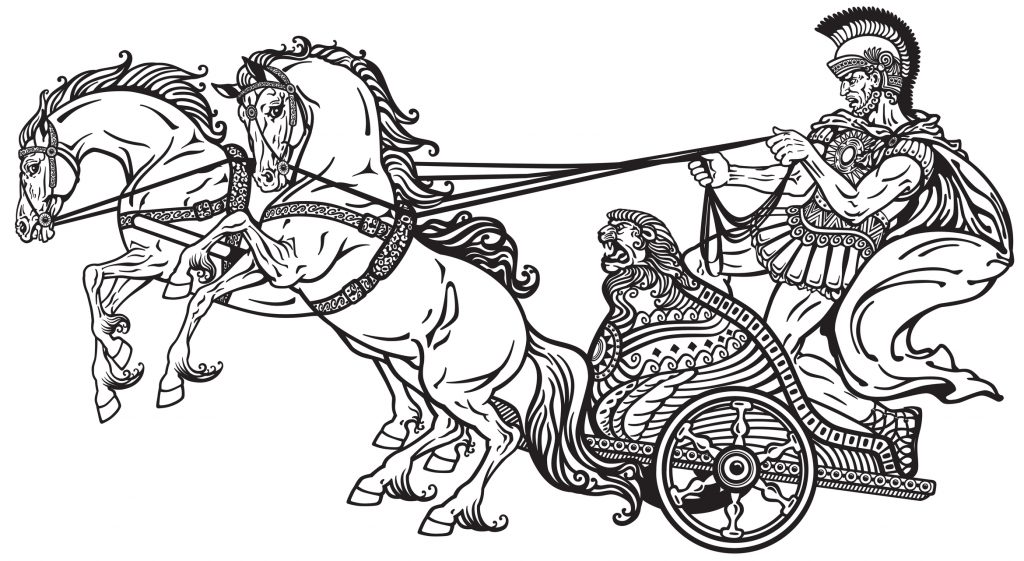
Plato thought that the horse of logic and reason pulled the chariot instead of the steed of emotion
Plato thought this too. He defined his position in the “Chariot Allegory,” that logic and emotion are two horses pulling on our decision making.
Plato argued basically everyone except ‘tyrants’ make decisions based on logic. Descartes (1644) followed suit. He argued ‘logic’ and ’emotion’ were separate, and logic/reason wins out.
But science shows we make decisions based on emotion (buying decisions, business decisions, coding decisions, you name it!).
Jayde Lovell, a top science storytelling specialist and host of ScIQ, the science show on The Young Turks Network, based at YouTube Studios in New York City, points to the studies of Hanna & Antonio Damasio.
“The brain science is clear, she said. The Damasios have proven in their work since 1994 that we make decisions based on emotions.”
Jayde holds up the findings from the Damasios’ Deciding Advantageously Before Knowing the Advantageous Strategy study published in the February 1997 issue of Science.
“Deciding advantageously in a complex situation is thought to require overt reasoning on declarative knowledge, namely, on facts pertaining to premises, options for action, and outcomes of actions that embody the pertinent previous experience… The results suggest that, in normal individuals, nonconscious biases guide behavior before conscious knowledge does. Without the help of such biases, overt knowledge may be insufficient to ensure advantageous behavior.”
Just the other day, I was riding in the car to the golf course with a friend for an early round. I mentioned something about the bogusness of the Federal Communications Commission and its head Ajit Pai eliminating net neutrality handing control of the internet over to the internet service providers (ISP) overloads.
“I believe it will definitely impact the quality of your video streaming and therefore your viewing experience in the future,” I said.
That triggered him big time. He immediately launched into a rant about how people don’t know the facts. That government shouldn’t be in business for the ineptitude. He questioned me about the amount of taxes One Percenters actually pay in our country. And how everyone is spouting off about regulatory and social decisions made by our government without knowing the facts.
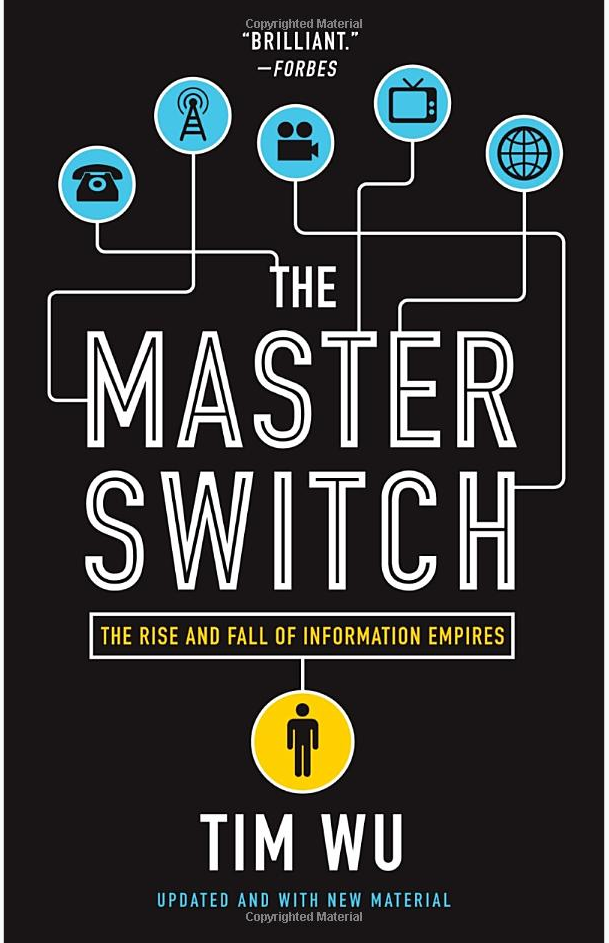 I attempted to position the source of my ‘reasoning’ by mentioning a book I read about the history of telecommunications and its monopolies and regulation: The Master Switch: The Rise and Fall of Information Empires, by Tim Wu.
I attempted to position the source of my ‘reasoning’ by mentioning a book I read about the history of telecommunications and its monopolies and regulation: The Master Switch: The Rise and Fall of Information Empires, by Tim Wu.
He immediately countered that the writer was just out to get the telecommunications industry.
“Actually, it’s just a history book on what has gone down since the telephone disrupted the telegraph industry, I said. The book is about the same creative destruction cycle of innovation, regulation, monopolization and inevitable market disruption that has played out with every telecommunications advancement, and it questions where the internet is in the cycle.”
I made the mistake of mentioning that Wu is a legal professor at Columbia University.
“And I bet he’s never run a business,” he shouted with a vein nearly popping out of his rippled forehead.
I didn’t even get to the point that Wu coined the phrase network neutrality in his 2003 paper Network Neutrality, Broadband Discrimination. My logic was no match for his rage.
At one point he even said, “If you don’t like it, go create your own ISP!” Again, another example of emotion trumping logic.
“Relax,” I said. “Take a deep breath. We’re just going to play golf, not save the world.”
I realized there was nothing I was going to say to overcome his entrenched views based on the facts as he knew them. Sure, his narrative was based on logic and reasoning, but his emotion hijacked the conversation.
This story is an uncomfortable example of what Jayde shared with me. She said, “Science shows us that when you are emotional, your endocrine system actively shuts down rational decision making.” The conclusion from how we change what others think, feel, believe and do:
“By understanding the process by which people become aroused, you can gain control of whether and how arousal happens. The first place to start with this is yourself. If you become emotionally aroused, then you are losing some control. This is often not a good thing, so learning self-control can be a critical skill. The next step is to understand how others become aroused and learning to control that process, from activating triggers to managing emotional states.”
I view a trigger like what I experienced as a worm infecting our brain’s hard drive. In this case, the malevolent virus was set off by me articulating my belief about net neutrality. We experienced a major kernel error in our user experience.

The code of storytelling
“Truth can only be found in one place: code,” states Robert C. Martin in his book Clean Code: A Handbook of Agile Software Craftsmanship. For the developer, the code you so precisely craft is how the user experience plays out in a temporal journey that, when done effectively, is as moving as a well-told narrative. Your audience participates in the story transporting them from one place to the next.
“Truth can only be found in one place: code.” – Robert Martin
You find truth in the stories we tell, too.
“We are, as a species, addicted to story. Even when the body goes to sleep, the mind stays up all night, telling itself stories,” according to John Gottschall, author of The Storytelling Animal: How Stories Make Us Human. Jonathan explains his story theory on this episode of the Business of Story podcast.
Stories are the software that feeds the constant whir of our neuro hard drive as it spins factual experiences, fictional tales and “what if” scenarios for us to react to and practice within day and night. But how can you hack this narrative ISP (Intellect Service Provider)?
Dr. Randy Olson, who earned his Ph.D. in Evolutionary Ecology from Harvard and then graduated from USC film school producing three documentaries, and then writing three books dedicated to helping the science community do a better job of communicating through storytelling, says it’s as simple as the And, But and Therefore (ABT).
Here’s an example of the three-act story structure of the ABT that this article is built upon.
The job of a developer is to create logically clean code AND efficiently connect people with content online. BUT many programmers think emotional storytelling is folly. THEREFORE, to resonate with people offline programmers can use stories as primal source code for the human mind to effectively interface in the real world.
I call the foundational ABT that Olson uncovered the “DNA of story.” But for this article, think of the ABT as the driver that creates the simple elegant solution for narrative, achieving the maximum desired effect in your communications with the smallest or simplest effort.
#A11723;”><strong>Set-up/Contradiction/Resolution </strong></span></p>
Olson’s third book, Houston, We Have a Narrative: Why Science Needs Story, shows you how the ABT three-part story structure works on our brains and why it’s been around since the beginning of time. He and Lovell teach their Story Circles program to scientists around the country to help them become more accessible and powerful communicators.
They will present their theory on Narrative Selection at SXSW in March.
Olson said, “Narrative Selection is the idea that our brains are shaped to favor ALL material that has a narrative form, and communication without narrative form are selected against eventually and vanish.”
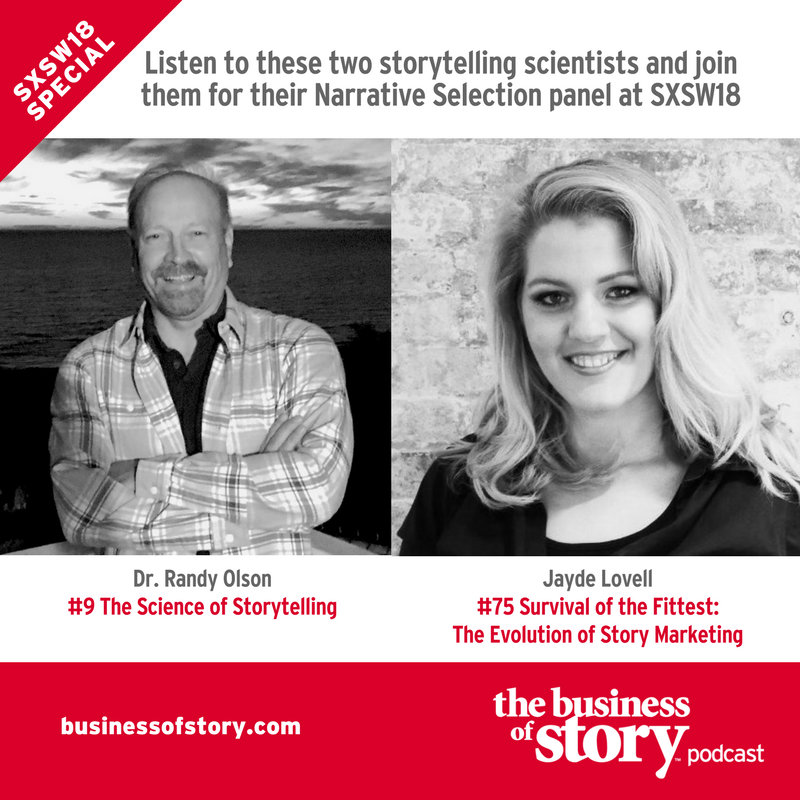 According to Olson, “This is the deal with myths and religion — the ones that persist all have solid narrative structure at their core — this is what Joseph Campbell figured out.”
According to Olson, “This is the deal with myths and religion — the ones that persist all have solid narrative structure at their core — this is what Joseph Campbell figured out.”
Campbell is America’s foremost mythologist who identified a universal framework to story called the Hero’s Journey. Screenwriters, songwriters, authors, virtual reality directors, event designers and even some programmers are inspired by the Hero’s Journey to create lasting experiences for their audiences.
But they typically start with the foundational ABT. For instance, Lovell spotted it in Carly Rae Jepsen’s 2012 mega-hit “Call Me Maybe.”
Hey, I just met you
And this is crazy
But here’s my number
So call me maybe
The ABT is the ideal starting point for your story because it simplifies and clarifies your theme. Then you can expand your narrative using frameworks like Campbell’s 17-step Hero’s Journey. Star Wars is the iconic movie everyone mentions as an example of the Hero’s Journey. I just read Ready Player One, the 2011 book that has become Steven Spielberg’s latest film premiering this spring. It is another inspired example of the Hero’s Journey.
Narratologists suggest that this universal story structure is effective because it connects with the ancestral technology of our minds for how we experience temporal events and consumes content.
“The human mind is a story processor, not a logic processor.” – Jonathan Haidt
If the ABT is the primal story API for our cerebral operating system, then the Hero’s Journey would be considered the information architecture for the source code. This is the evolutionary language our brain’s embedded system for meaning-making relies upon.
I have refined the Hero’s Journey into the Story Cycle system, a 10-step process that maps this universal story structure to business communications. Businesses use the Story Cycle to clarify their brand story strategy, grow revenue and their people, amplify their impact and simplify their lives.

Brands that have used the system have grown by as much as 400 percent and now train their leadership how to connect through true stories well told.
It works because the Story Cycle helps leaders create a clean interface of understanding and empathy with people. And when properly coded into your communications, it’s how you arouse the neurotransmitters that trigger emotion in your audiences.
Story changes the chemistry in your brain
Telling a good story is like stirring a cauldron of chemicals in your audience’s brain. For instance, create conflict in your story and you’ll trigger the steroid hormone cortisol to focus attention. Reward us with success and the neurotransmitter dopamine wells-up triggering optimism.
Game developers, for instance, are guided by finding ways to arouse these chemicals in their players. Gamification is all about triggering these primal urges to level up the player.
While cortisol and dopamine can take us on an emotional roller coaster within a story, the chemical all persuasive leaders want to excite in our minds is oxytocin. In this TEDTalk, neuroeconomist Paul Zak describes his experiments that test how oxytocin helps people connect and build trustworthiness through storytelling. He calls oxytocin the Moral Molecule.
Develop your storytelling skills at MuraCon
As Martin states in his Clean Code book, “One difference between a smart programmer and a professional programmer is that the professional understands that clarity is king. Professionals use their powers for good and write code that others can understand.”
The same can be said about storytelling for business executives, developers, and programmers. The professional understands that clear communication is king in every aspect of their careers.
Storytelling is functional programming in your interpersonal communications where you emphasize the evaluation of expressions (emotion) rather than the execution of commands (logic and reason).
I hope you will join me a MuraCon 2018 for my keynote session on Thursday, April 5. On Friday, I will present a half-day Business of Story workshop providing you with the building tools of the ABT and the Story Cycle system and show you how to use them to create better user experiences in your technical career.
I’ve learned that having a greater understanding of how storytelling impacts people will also give you a greater appreciation for the journeys your audience are on and how to connect and move them to action both online and off.
So register today for MuraCon 2018, a consider this step one in your capability maturity model for communications.
Because regardless of whether you’re a digital program manager, content marketer, SEO specialist or programmer, you are under fire to deliver exceptional user experiences, especially in our commoditized digital world. We all are. Even as our techno-driven communications continue to expand and bombard us with messaging 24/7, it is the primal technology of story that connects us human-to-human.
Plus, when you find a good story, it will pass all regression testing and stand the test of time. It is the gold code in human interaction you’re looking for that will deliver your most rewarding user experience in life.


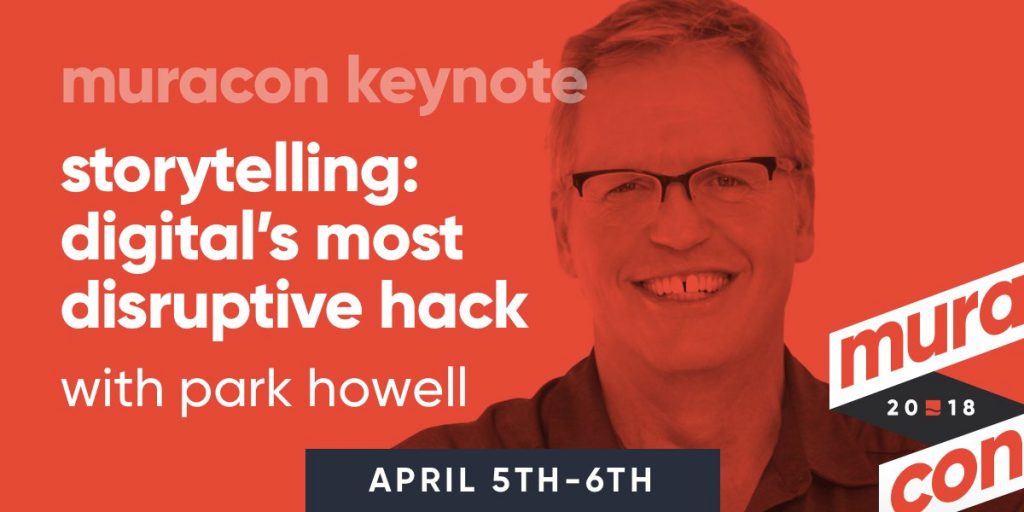
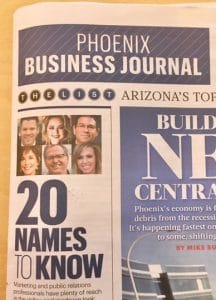








at 11:43 am
[…] I also wrote this article for the audience: How Storytelling “Soft Skills” can Create Better User Experiences in Technical Careers […]